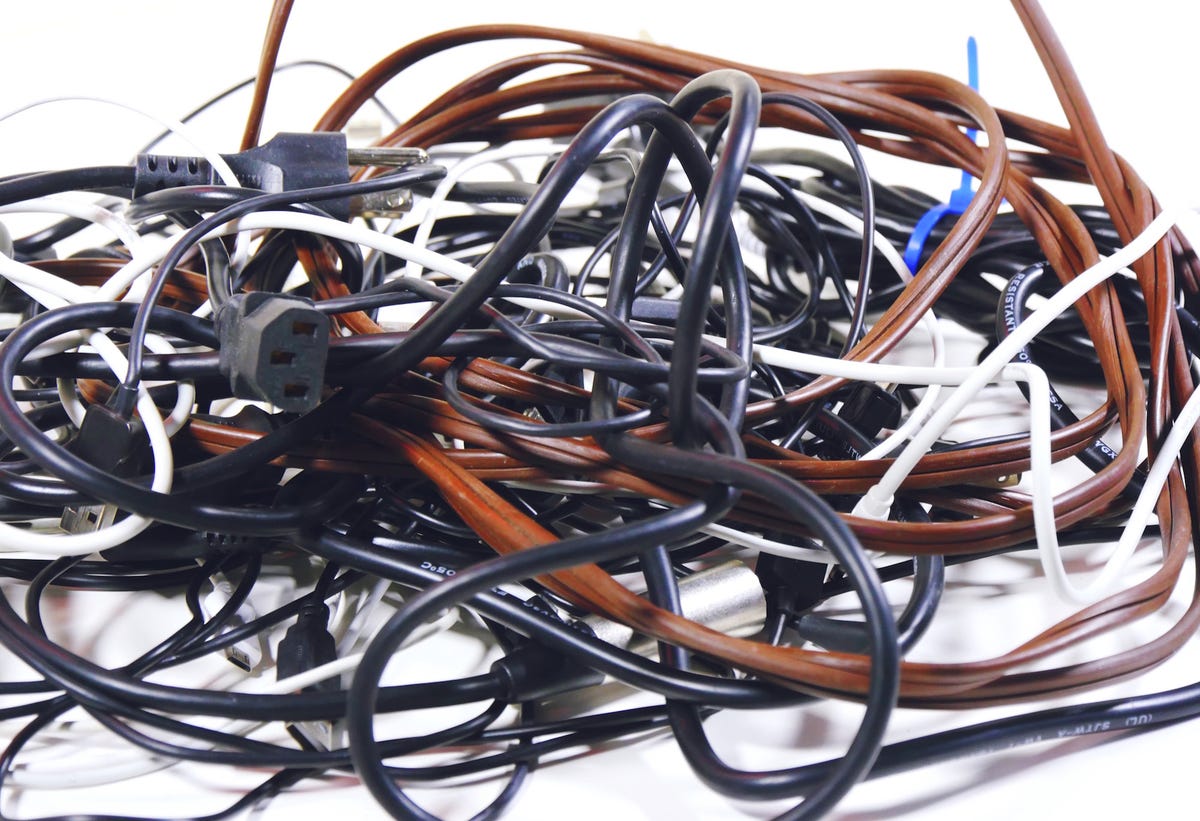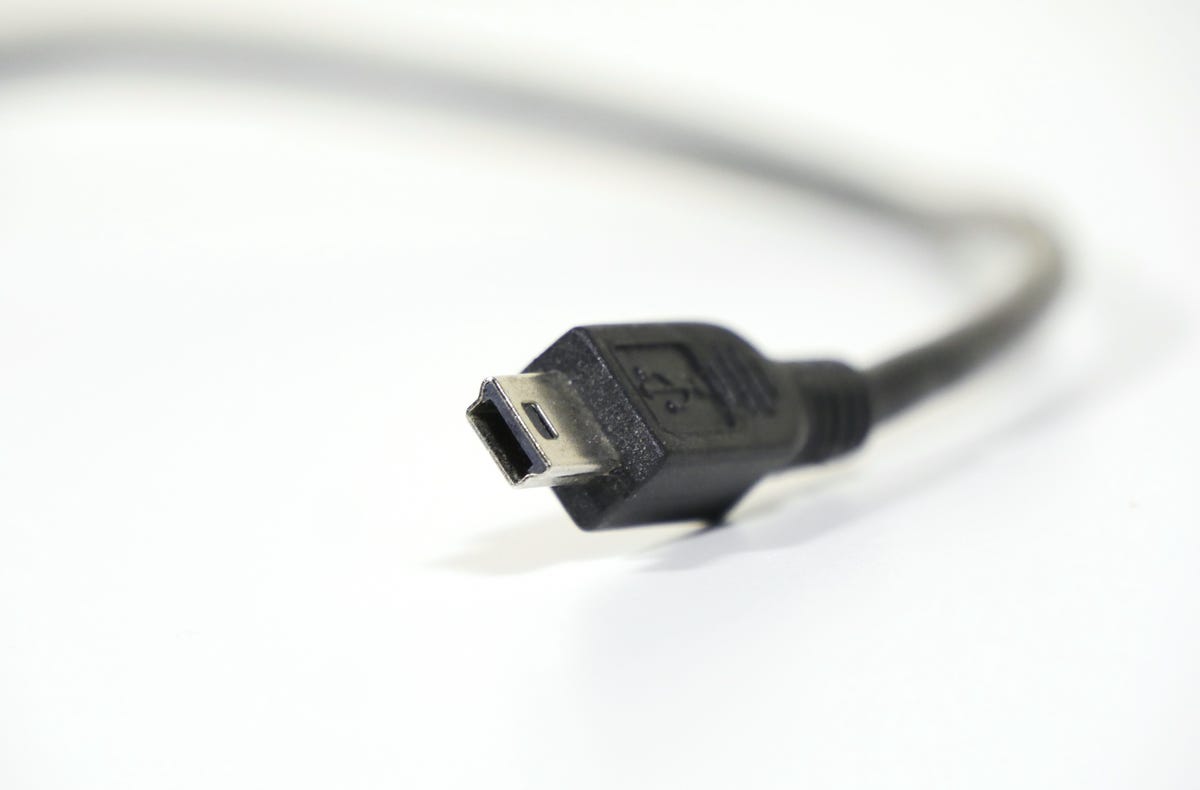10 old cables you should keep around (and 6 to toss)
Clear out your collection of cords and cables with these tips.


Keep: Mini-USB
If you owned a cellphone in the early 2000s, it probably used Mini-USB. Everything from BlackBerrys to the popular Moto Razr used Mini-USB. Nowadays, not much uses it, and it's been almost completely replaced by the newer Micro-USB standard.
Keep. Some devices that use Mini-USB are still around; I have hard drives, cameras, camera battery chargers and microphones that use it. It doesn't hurt to keep at least one on hand, but you definitely don't need a pile of them in the bottom drawer of your desk.
Keep: Micro-USB
A majority of smartphones from the last years came with a Micro-USB connection. This connector is used on everything from smartphone and tablet chargers to power supplies for streaming devices and even Amazon's two newest Alexa devices: the Echo Dot and Tap.
Keep. Considering how widely used Micro-USB still is, it's okay to continue hoarding them for the next few years.
Toss: Apple 30-pin
Toss. Apple's hideous 30-pin connection died with the iPhone 4S and iPad 3. Once the newer iPhone 5, fourth-gen iPad and iPad mini were announced in 2012, the dreaded 30-port was replaced with the new, sleek and reversible Lightning connection.
If you've upgraded your iPhone and iPad to anything made recently, it's time to let go of the old 30-pin cables.
Keep: USB 3 Micro-B
You may have seen a few devices with the odd looking USB 3 Micro-B connection, but it's certainly not very common. It's primarily used in newer external hard drives, but the Samsung Galaxy Note 3 also shipped with it.
Keep. This cable is a mixture of old and new technologies. The USB 2.0 portion looks like the familiar Micro-USB connection. Flanking it is the USB 3.0 or 3.1 portion, which provides up to 10 times the throughput of the old standard.
However, with USB Type-C rolling out ahead of schedule, the reversibility and slimmer profile may send the USB 3 Micro-B cable to end-of-life (EOL) status a little sooner than expected. Some devices may still come out with the connection in the future, so hang on to one or two of these as a just-in-case cable.
Keep: Thunderbolt or Mini DisplayPort
Apple's proprietary Thunderbolt connection may soon go the way of the USB 3 Micro-B cable. Thunderbolt 3 was announced around the middle of 2015, delivering twice the throughput (up to 40Gbps) of Thunderbolt 2 and a more universal connection -- USB Type-C.
Keep. If you have a few Thunderbolt 1 or 2 adapters, don't toss them yet. They will continue to work with existing devices for years to come.
Mini DisplayPort adapters and cables do plug into Thunderbolt 1 and 2 ports, but they're not compatible with newer devices, so toss them.
Keep: DisplayPort
DisplayPort is found on computer monitors, a small selection of televisions and business-oriented laptops.
Keep. While it's not as ubiquitous as HDMI, DisplayPort is still popular in the audio/video space and it's too soon to write it off. It can support multiple video streams over a single connection and, with the new 1.3 specification, it can support up to 8K.
While many laptops have switched to Mini DisplayPort, it's still too soon to get rid of the standard DisplayPort cables.
Toss: DVI
Digital Virtual Interface, better known as DVI, is a standard that was created in 1999. With a dual-link DVI connection, you can reach a maximum resolution of 2,560 by 1,600 pixels. The biggest drawback, aside from the connector's size, is the lack of audio.
Toss. The technology practically dead, as most manufacturers announced they would stop supporting the technology in 2010 in favor of DisplayPort and HDMI. Most computer monitors now come with HDMI, a far superior display connector.
Toss: VGA
VGA is an old analog technology. It's virtually aged out and won't be found on many devices at all anymore. It doesn't play well with LCD monitors and should probably be avoided, if possible.
Toss. Unless you're hanging on to an old VGA-only monitor for some reason, it's time to ditch the VGA cables.
Keep: USB A to B
That odd looking, boxy cable you found in a drawer that doesn't seem to fit anything is probably a USB A to B cable, most commonly used in printers.
Keep. It's good to have one of these on hand, especially for printers or audio interfaces. Even some older hard drives used this connection, so hang on to this cable for now.
Keep: 3.5mm auxiliary
The 3.5mm auxiliary is one of the most ubiquitous connections around today. You can find it on home audio setups, smartphones, tablets, computers, monitors, televisions, car stereos, arm rests on airplanes and virtually any other audio-enabled devices you can imagine.
Keep. It's always a great idea to keep a few spare 3.5mm cables lying around. Bluetooth hasn't taken over...yet.
Toss: RCA/Composite
RCA or composite cables -- the classic red, white and yellow cables you used to use to plug in your Nintendo to the television -- are still available on most televisions and some computer monitors.
Toss. It's not the most popular or desirable way to push video or audio, as it's an analog connection. HDMI and optical are the better options for audio, so get rid of those RCA cables.
Toss: S-Video
You've seen this cable a million times in your cable drawer, but you don't know what it goes to: it's S-Video and it's completely deprecated. It's an old analog connector for standard-definition video.
Toss. Chances are, you don't have anything that will work with this cable anymore and it's time to toss it.
Toss: Coaxial
This is an age-old cable that is still widely used, especially for cable and Internet. Don't expect that to last forever, though. Fiber is the biggest threat to the traditional copper cable.
Toss. You probably don't need any more coaxial cables than you already have. When you sign up for new Internet or cable service, the provider typically...provides them. Hang on to one, just in case, and let the rest go.
Keep: SATA
Keep. SATA cables can be a total life saver when something catastrophic happens to your computer. If your motherboard dies or, for some reason you can't power on your computer, you can remove the hard drive and still recover the data with a SATA cable. Even better is a SATA to USB cable, but either way, it's worth it to keep a SATA cable around.
Keep: 3-prong Trapezoid Computer Power Cord
Keep. This is the standard AC plug for a computer. It's the one you accidentally knocked loose when you used to have an actual tower PC -- you know, in the days before laptops took over.
This is also the same plug used for the power source on an Xbox 360 and Xbox One, so it's still nice to have a spare 3-prong trapezoid plug, just in case.
Keep: 2-prong Power Cord
These two-prong plugs can be found in a lot of different devices. They're less common than they used to be, though. Camera chargers are the first thing that come to mind, but you can also find these two-prong cords in some multi-port phone chargers and a few other applications.
Keep. You may never need one of these 2-prong cables, but having one on hand won't hurt.

